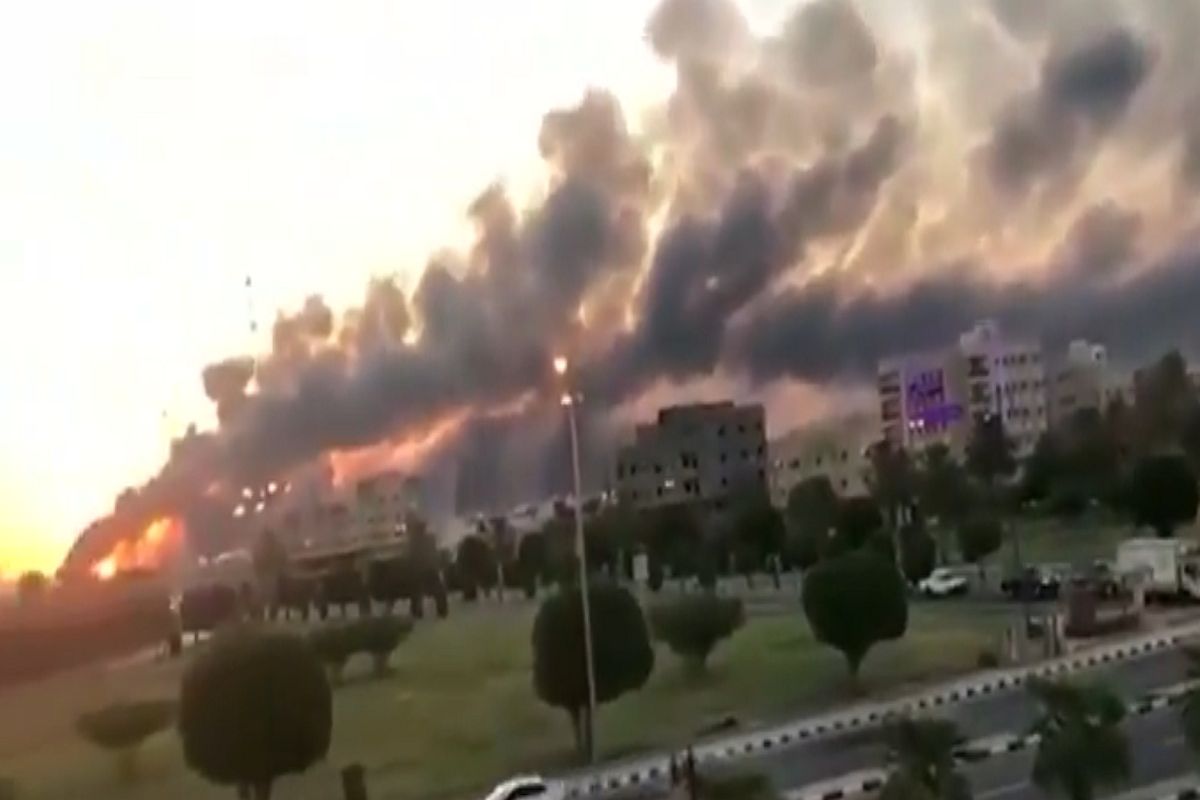Fires broke out at two facilities of Saudi Aramco, Saudi Arabia’s state-run oil producer after they were reportedly hit by drones, the Interior Ministry said on Saturday
The two facilities are located in Abqaiq and Khurais, Saudi Arabia’s interior ministry was quoted as saying by media.
“The industrial security teams of Aramco started dealing with fires at two of its facilities in Abqaiq and Khurais as a result of… drones,” the official Saudi Press Agency reported.
“The two fires have been controlled,” it added.
It wasn’t clear if there were any injuries in the assault on the processing plant in Buqyaq and at the Khurais oil field.
The company describes its Abqaiq oil processing facility in Buqyaq as “the largest crude oil stabilization plant in the world.”
Saturday’s attack is the latest part of a series of attacks on oil infrastructure, including the sabotage of pumping stations along the East-West pipeline, and attacks on oil tankers off Fujairah and close to the Strait of Hormuz.
Earlier in August, Saudi Aramco’s Shaybah gas plant was reportedly targeted by drones, Yemen’s Houthi rebels had claimed responsibility for the attacks.
In June, two oil tankers were hit in a suspected attack in the Gulf of Oman. The tankers were struck in the same area where the US accused Iran of using naval mines to sabotage four other oil ships in an attack in May.
The oil tankers were 10 nautical miles apart and headed to Asia when they were struck by explosions after passing through the Strait of Hormuz some 25 nautical miles off Iran’s southern coast.
Saudi Arabia’s energy minister Khalid al-Falih had said the kingdom was monitoring the situation with “great concern” and called for action to secure maritime traffic.
The preliminary findings of an UAE-led investigation found that a state actor was responsible but stopped short of naming Iran.
A Saudi-led coalition is fighting the Yemeni rebels which it accuses of being “Iranian proxies”.
The development has significant importance for India as Saudi Aramco has shown keen interest in forging a strategic alliance with New Delhi for the West Coast Refinery, to be built as world’s most advanced oil refinery.
Union Petroleum Minister Dharmendra Pradhan on September 8 had a fruitful meeting with Prince Abdul Aziz bin Salman, the new Saudi Minister for Energy, in Jeddah in this connection.
At present there are around 24 oil refineries in India, majority of which belong to public sector. In the wake of India’s growing oil and energy needs, a mega refinery like the one on the west coast with an expected capacity of 60 mmtpa is vital which would cater to the country’s future requirements.
India also aims to increase its oil reserves for up to 100 days. Sources said that Saudi Aramco is also willing to provide reserve oil to India. In fact, Aramco, which is soon bringing in a much-awaited IPO, could be keen on projecting its huge investments and strategic partnership with India.
(With agency inputs)












